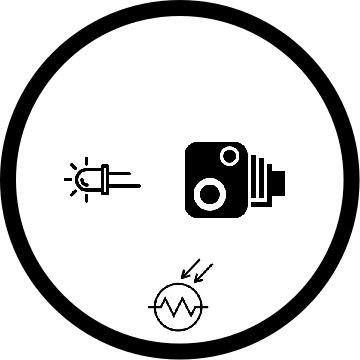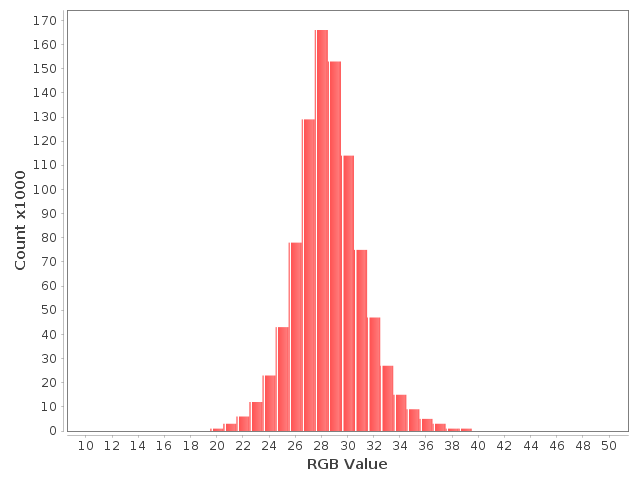This a fully enclosed sphere containing a web cam, white led and photo resistor in exactly the geometric arrangement shown. The led glows dimly (via fixed dropper resistor). It runs at about 9 mA. It's light reflects off the inside of the sphere and the web cam takes pictures of the inside of the sphere. The photo resistor is there to measure relative light levels. The system is theoretically in a steady state (including temperature which hovers around 29 deg.C). and there is no extraneous light. This is what the camera sees:-
and this is that image's histogram:-
The thing is, it's not steady state. These are the photo resistances and histogram means in two experiments each taking three weeks The initial number is at the start, and the second number is at the end of three weeks. They gradually change from one to the other as I measure them.
- 69.4k -> 136.5k, 33 RGB -> 1 RGB
- 28.7k -> 55.7k, 49 RGB -> 21 RGB
Both times the photo resistance and histogram mean drops very significantly, in experiment 1 almost to zero. The inference is that the inside of the sphere is getting darker as time goes by (measured in weeks). This question regarding photo resistor stability was inconclusive but cannot explain the shifting histogram.
It's difficult to judge by eye, but I think that the LED is getting slowly dimmer. Occam would suggest so, but I have used two brand new LEDs so they would have both behaved like this. The generic LEDs were both from a cheapo bulk eBay purchase.
Q1. Can this be explained from an electronics perspective?
Q2. Can anyone suggest any further investigation(s) I can undertake?
EDIT.
I came across something called current crowding which seems to fit my problem. I can't follow the link though due to a flight failure...



